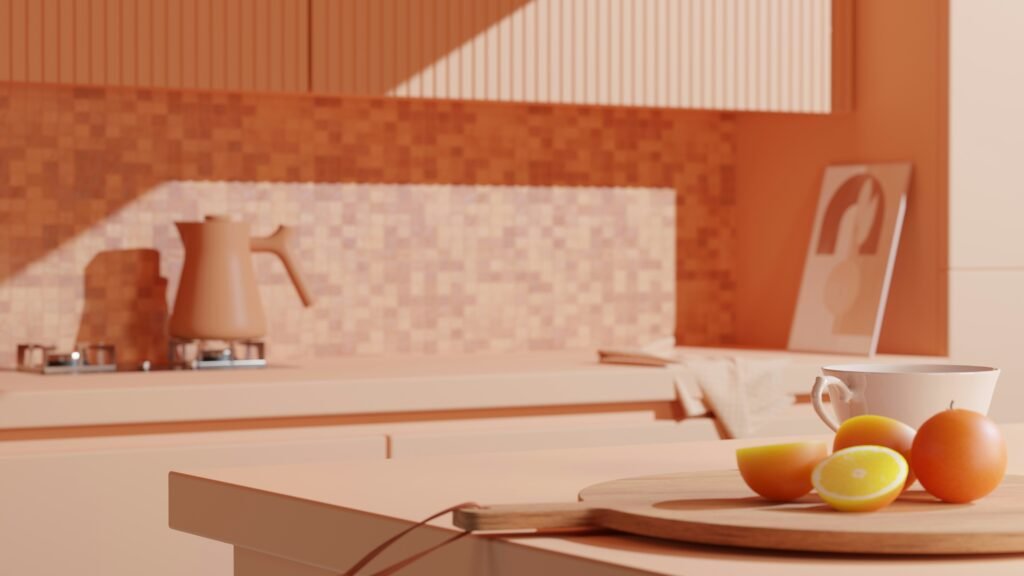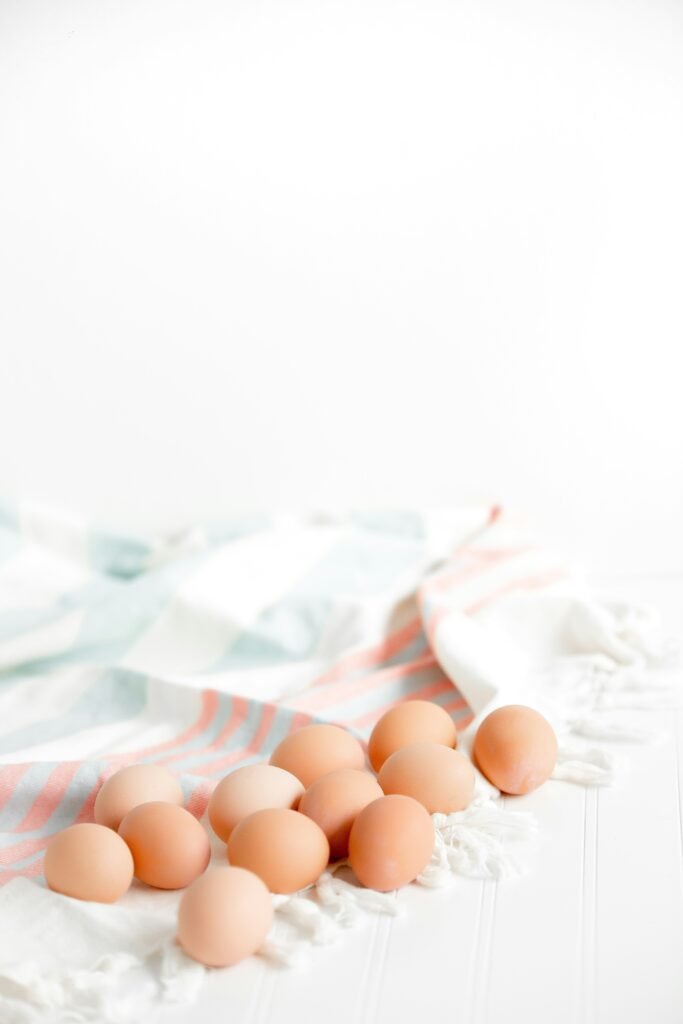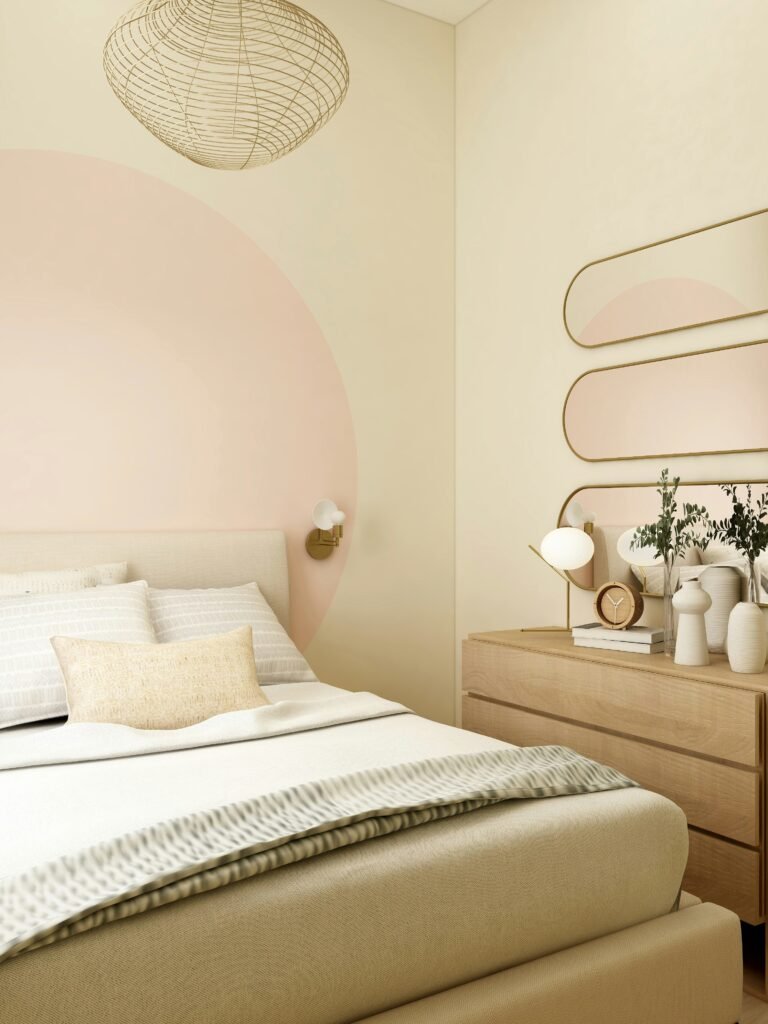?Are you curious about Scandinavian home decor ideas you can try to make your space feel brighter, calmer, and more functional?

What Are Scandinavian Home Decor Ideas I Can Try?
Scandinavian design is all about creating a comfortable, efficient, and visually calming home that emphasizes light, functionality, and natural materials. You can adopt its principles whether you live in a studio apartment or a family house by focusing on simplicity, warmth, and well-chosen accents.
Key Principles of Scandinavian Design
Understanding the core principles will make it easier for you to apply the style across rooms and budgets. These principles act like a checklist so you can make decisions that feel cohesive and intentional.
Simplicity and Minimalism
Scandinavian spaces favor uncluttered surfaces, restrained ornamentation, and simple forms, which helps you feel less overwhelmed in your home. When you pare items down to those that are useful or meaningful, your space will read as calm and intentional.
Functionality and Practicality
Every piece should have a purpose; furniture often doubles up for storage, seating, or work use. You should choose pieces that solve problems—like compact dining sets or storage ottomans—so your home is efficient without feeling sparse.
Light and Brightness
Because Nordic countries have long winters, Scandinavian design prioritizes maximizing natural light and using reflective surfaces to keep spaces luminous. You should aim to open windows, use light paint, and place mirrors strategically to boost brightness.
Natural Materials and Textures
Wood, wool, leather, and natural stone are staples because they bring tactile warmth and visual depth into clean-lined interiors. Combining these textures will help your space feel layered and cozy without adding visual clutter.
Hygge and Comfort
Hygge is the practice of creating warmth and contentment through small everyday comforts like candles, soft textiles, and relaxed seating. You should create spaces that invite lounging, reading, or long conversations rather than formal display.
Color Palette and Finishes
Color choices set the mood for your Scandinavian home and should support the light, airy feeling rather than compete with it. You can use a largely neutral base with carefully chosen accents to add personality.
Neutrals and Whites
Whites and off-whites provide a clean backdrop that reflects light and visually enlarges rooms, making them feel fresh. You should use white on walls, ceilings, and large furniture pieces, then layer in texture to avoid a sterile appearance.
Accent Colors
Muteds such as dusty pink, soft green, navy, and warm gray work well as accents and let you add subtle personality without overwhelming a space. You can introduce these through small furniture pieces, textiles, or artwork to keep the palette calm and cohesive.
Wood Tones
Light woods like pine, ash, and birch dominate Scandinavian design, bringing warmth and an organic feel to interiors. You should combine light wood furniture with neutral surfaces, and consider mixing a few mid-tone woods for contrast.
Table: Typical Color Uses in Scandinavian Rooms
| Room | Primary Color(s) | Accent Suggestions | Finish Tips |
|---|---|---|---|
| Living Room | White, soft gray | Muted greens, navy, terracotta | Light matte walls, natural wood furniture |
| Kitchen | White, cream | Pale blue, sage | Satin cabinets, wood countertops |
| Bedroom | Off-white, pale gray | Pastel pink, warm beige | Soft matte, natural wood headboard |
| Bathroom | White, cool gray | Black fittings, light wood | Gloss tiles with matte wood accents |
| Entryway | Neutral base | Dark navy door, textured rug | Durable paint, wood bench |
Furniture Choices
Furniture in Scandinavian interiors marries form with function: clean silhouettes, solid construction, and pieces chosen for comfort and usefulness. You should prioritize multi-use items and keep scale appropriate for your room size.
Clean Lines and Low Profiles
Low-profile sofas, streamlined tables, and simple shelving systems maintain open sightlines and a relaxed atmosphere. You should look for pieces with tapered legs, slim arms, and subtle shaping that doesn’t overpower space.
Multi-functional Pieces
Think fold-out tables, nested side tables, daybeds with storage, and modular shelving to get the most utility from each piece. You can maximize a small footprint by choosing furniture that adapts to different needs throughout the day.
Iconic Scandinavian Furniture Examples
Design classics—like Wishbone chairs, mid-century sofas, and minimalist coffee tables—offer longevity and visual harmony, often crafted from quality materials. You should invest in one or two statement pieces if your budget allows, since they anchor the room.
Table: Furniture Pieces and Where They Work Best
| Piece | Purpose | Room(s) | Buy-or-DIY Tip |
|---|---|---|---|
| Comfortable sofa | Main seating | Living room | Choose durable fabric; consider slipcovers |
| Nesting tables | Flexible surfaces | Living room/Bedroom | Great for small spaces; DIY with plywood/topcoat |
| Extendable dining table | Dining & work | Kitchen/Dining | Space-saver for guests |
| Platform bed with storage | Sleep + storage | Bedroom | Adds hidden storage without bulky dressers |
| Minimal shelving | Display & storage | Hallway/Office | Combine closed cabinets and open shelves |
Lighting Strategies
Good lighting transforms a space, especially where natural light is limited. You should layer light sources to create warmth and adaptability for different tasks and moods.
Maximize Natural Light
Keep windows unobstructed and use sheer or unlined curtains to let in as much daylight as possible. You should also place mirrors across from windows to reflect light deeper into the room.
Layered Lighting
Combine ambient (overhead), task (reading/working), and accent (mood/highlight) lighting so every activity has appropriate illumination. You should use table lamps, floor lamps, pendants, and undercabinet lights where necessary to create depth.
Fixtures and Finishes
Simple, sculptural fixtures in matte black, brass, or white work well because they add interest without overpowering other elements. You should pick fixtures that scale with the room and emphasize form and function.
Table: Layered Lighting Examples
| Layer | Example Fixtures | Where to Use |
|---|---|---|
| Ambient | Ceiling pendant, recessed lights | Living room, bedroom |
| Task | Desk lamp, undercabinet strip lights | Kitchen counters, home office |
| Accent | Picture lights, small spotlights | Artwork, shelves |
| Decorative | Statement pendant, sculptural lamp | Entryway, dining area |
Textiles and Soft Furnishings
Textiles are a quick way to bring warmth, color, and texture into Scandinavian interiors without cluttering surfaces. You should rely on natural and tactile materials for long-lasting comfort.
Rugs and Carpets
Add layered rugs to define seating areas and introduce warmth underfoot, especially on wood or tile floors. You should choose neutral or low-contrast patterns to keep the room feeling airy and cohesive.
Throws and Pillows
Throws, wool blankets, and pillows are a simple way to add hygge, texture, and seasonal color shifts. You should use varying textures—like knit, wool, and linen—to keep layers interesting but restrained.
Curtains and Window Treatments
Light, flowing curtains or simple roller blinds maintain privacy while avoiding heavy visual weight. You should hang curtains high and wide to make windows feel larger and ensure maximum light when open.
Fabrics and Patterns
Favor natural fibers like cotton, linen, and wool, with small-scale or geometric patterns that feel timeless rather than trendy. You should be selective with pattern usage—one patterned textile can be enough when paired with low-key surroundings.

Storage Solutions
Scandinavian style hides clutter through smart storage rather than hiding everything out of sight; accessible and attractive storage helps you stay organized and comfortable. You should build systems that fit your routine and affordances, so tidying becomes simple.
Built-ins and Shelving
Built-in cabinets and open shelving provide structure and display without bulk, especially if you integrate them into walls or alcoves. You should balance open shelves for curated items with closed storage for day-to-day clutter.
Closed Storage and Basketry
Woven baskets, lidded boxes, and simple cabinets maintain the tidy look by giving you a place for small items and textiles. You should use neutral baskets and containers that complement wood tones and soft fabrics.
Decluttering and Editing
A minimalist approach works best when you routinely edit possessions, keeping only what you use or truly love. You should establish a small purge habit, like seasonal edits or “one in, one out” rules, to maintain the clarity of your space.
Table: Storage Ideas by Room
| Room | Open Storage | Closed Storage | Extra Tip |
|---|---|---|---|
| Living Room | Floating shelves | TV console with doors | Use baskets for throws |
| Kitchen | Open shelves for dishes | Pantry cabinets | Keep countertops clear |
| Bedroom | Display shelf for decor | Under-bed storage | Use wardrobe organizers |
| Bathroom | Wall-mounted shelves | Closed vanity | Store toiletries in matching jars |
| Entryway | Wall hooks, shoe rack | Bench with cubbies | Floor mat to collect dirt |
Room-by-Room Ideas
You’ll achieve the Scandinavian look more easily by applying principles room by room while keeping a cohesive palette and material language across the home. Each room has special needs—lighting, storage, and activity—that you should address thoughtfully.
Living Room
Prioritize a comfortable seating area, natural light, and a focus on materials—wood coffee tables, textured rugs, and soft throws. You should create zones for conversation and relaxation, using furniture placement to keep the space airy.
Kitchen
Keep cabinetry clean-lined, choose neutral surfaces, and use lighting to highlight work areas. You should make countertops functional by limiting decorative items and using open shelving for pretty dishes or frequently used items.
Bedroom
Aim for a serene palette, cozy textiles, and practical storage like built-in wardrobes or under-bed drawers. You should choose a comfortable mattress, layered bedding, and simple bedside lighting to support rest.
Bathroom
White tiles, wood accents, and minimal hardware create a spa-like feel, while smart storage keeps clutter away. You should use natural textures like wooden mirrors or woven baskets for warmth without crowding the space.
Entryway
Make a small entry feel like an organized transition: a bench, hooks, a durable rug, and a small shelf or basket for keys. You should keep the entry practical so you can leave and return without creating mess.
Home Office
Choose ergonomic seating, a simple desk, and effective task lighting to keep you productive without distractions. You should incorporate shelving and cord management to keep the workspace serene and efficient.
Small Space Scandinavian Tips
Scandinavian principles are ideal for small spaces because they emphasize light, functional furniture, and minimal clutter. You should prioritize multifunctional pieces, vertical storage, and a consistent color palette to keep the space feeling larger.
- Use mirrors to double perceived space and reflect light.
- Opt for furniture with legs to expose floor area and create an airy feel.
- Keep decor minimal and choose pieces that offer storage or flexibility.

Mixing Scandinavian with Other Styles
You can blend Scandinavian principles with other styles—like mid-century modern, industrial, or Japanese wabi-sabi—to create a personalized space. You should maintain the Scandinavian core of light, simplicity, and natural materials while introducing one complementary style in measured amounts.
- With mid-century modern: Add a vintage chair or sculptural lamp.
- With industrial: Use black metal accents and exposed bulbs.
- With boho: Layer textiles and natural fiber rugs while keeping neutral walls.
Budget-Friendly and DIY Projects
You don’t have to spend a lot to get the Scandinavian vibe; many signature looks are achievable with paint, thrift finds, and simple DIY projects. You should focus on cost-effective swaps that have big visual impact.
Painting and Minor Updates
A fresh coat of white paint, sanding and staining an old table, or replacing cabinet hardware can change the feel of a room drastically. You should choose durable paint and stick to neutral bases so future updates are easy.
Thrift and Upcycle
Secondhand shops and flea markets are perfect for finding solid wood furniture or simple frames that you can refinish. You should look for pieces with good bones—solid wood, clean lines—and give them new life with paint or upholstery.
Simple DIY Furniture
Build a floating shelf, reupholster a chair, or create a simple wooden bench from planed boards; many Scandinavian looks are straightforward to make. You should measure carefully, choose quality finishes, and prioritize stability over elaborate design.
Table: Low-Cost Makeover Ideas
| Project | Estimated Cost | Impact |
|---|---|---|
| Paint walls white | $30–$100 | High—brightens and refreshes |
| Replace lighting fixtures | $50–$200 | High—changes mood and function |
| Refinish a wood table | $20–$80 | Medium—adds warmth and character |
| Add woven baskets | $10–$50 | Medium—improves storage and texture |
| DIY floating shelves | $15–$60 | Medium—functional and visual |
Mistakes to Avoid
Avoid cluttering surfaces, mixing too many colors, or choosing oversized furniture that blocks light and flow. You should remember that Scandinavian design is not about stark minimalism alone—it’s about warmth and usability.
- Don’t use too many bold patterns; keep things subtle.
- Avoid over-accessorizing; choose fewer, more meaningful items.
- Don’t ignore lighting; even a well-furnished room will feel flat without it.
Shopping and Sourcing
Shop intentionally and prioritize quality where it matters—like sofas, beds, and lighting—while saving on items that are easy to replace. You should mix high-quality classics with affordable accents to build both durability and visual interest.
Table: Where to Look for Scandinavian-Style Finds
| Type | Where to Buy | Tip |
|---|---|---|
| Affordable basics | Big-box retailers, online marketplaces | Look for neutral, simple silhouettes |
| Iconic/design classics | Design stores, vintage markets | Invest where comfort and longevity matter |
| Secondhand | Thrift stores, local buy/sell apps | Hunt for solid wood and good proportions |
| Local artisans | Craft fairs, Etsy | Support makers for unique textiles and ceramics |
Maintenance and Care
To keep your Scandinavian decor looking fresh, maintain natural materials with appropriate cleaning and seasonal checks. You should develop a light maintenance routine—dusting, airing textiles, and minor wood care—to preserve finishes and comfort.
- Clean wood with mild soap and oil occasionally.
- Air and sun rugs and pillows to refresh fibers.
- Replace any bulbs that dim or change color to maintain consistent lighting.
Final Checklist and Quick Plan
Before you start a room overhaul, set a simple plan with priorities, budget, and timeline to avoid decision fatigue. You should list anchor pieces first (sofa, bed, table), then add textiles, lighting, and small accents.
Table: Room-by-Room Quick Checklist
| Room | Anchors | Lighting | Textiles | Storage |
|---|---|---|---|---|
| Living Room | Sofa, coffee table | Overhead + floor lamp | Rug, throws, pillows | Media console, baskets |
| Kitchen | Functional table/counter | Task lighting | Small rug, dish towels | Closed cabinets |
| Bedroom | Bed, mattress | Bedside lamps | Bedding layers, rug | Wardrobe, under-bed |
| Bathroom | Vanity | Overhead + mirror light | Towels | Wall shelf, baskets |
| Entryway | Bench | Pendant or wall sconce | Doormat | Hooks, basket |
Frequently Asked Questions (FAQs)
You might have practical questions about implementing Scandinavian design in different living situations, and short answers can help you make quick decisions. Each answer below gives you direction without requiring a major revamp.
Q: Can Scandinavian design work in a warm climate? A: Absolutely. You can keep the light palette and natural materials but use cooler textiles and lighter bedding so the space feels breathable. Focus on ventilation and light fabrics like linen to maintain comfort.
Q: How do I make a rented space feel Scandinavian? A: Use removable solutions—peel-and-stick wallpaper, lightweight curtains, plug-in lighting, and freestanding furniture that doesn’t require built-ins. You should avoid permanent changes and concentrate on soft furnishings and surface upgrades.
Q: Is Scandinavian design suitable for families with kids? A: Yes; choose durable fabrics, easy-to-clean surfaces, and storage solutions that teach organization. You should accept some mess and create kid-friendly zones where activity is expected.
Q: How much should I spend on a sofa for a Scandinavian living room? A: Invest where you’ll get daily use and comfort—spend more on the sofa if it’s the central piece; save on side tables and decor. Aim for good upholstery and a sustainable frame to make it last.
Q: Can dark colors fit in Scandinavian interiors? A: Dark colors can be used as accents or dramatic backdrops in specific areas, but balance them with light surfaces and reflective elements. You should keep most surfaces light to preserve the airy feel.
Q: How do I choose art for a Scandinavian home? A: Select simple, minimalist pieces, neutral-toned prints, or small galleries of framed black-and-white photos. You should avoid overcrowding walls and instead curate a few pieces that harmonize with your palette.
Final Encouragement
Applying Scandinavian decor is about making a home that supports your life: comfortable, light, and functional with thoughtful, natural touches. You should start small, make intentional choices, and gradually shape a space that feels calm, practical, and uniquely yours.
